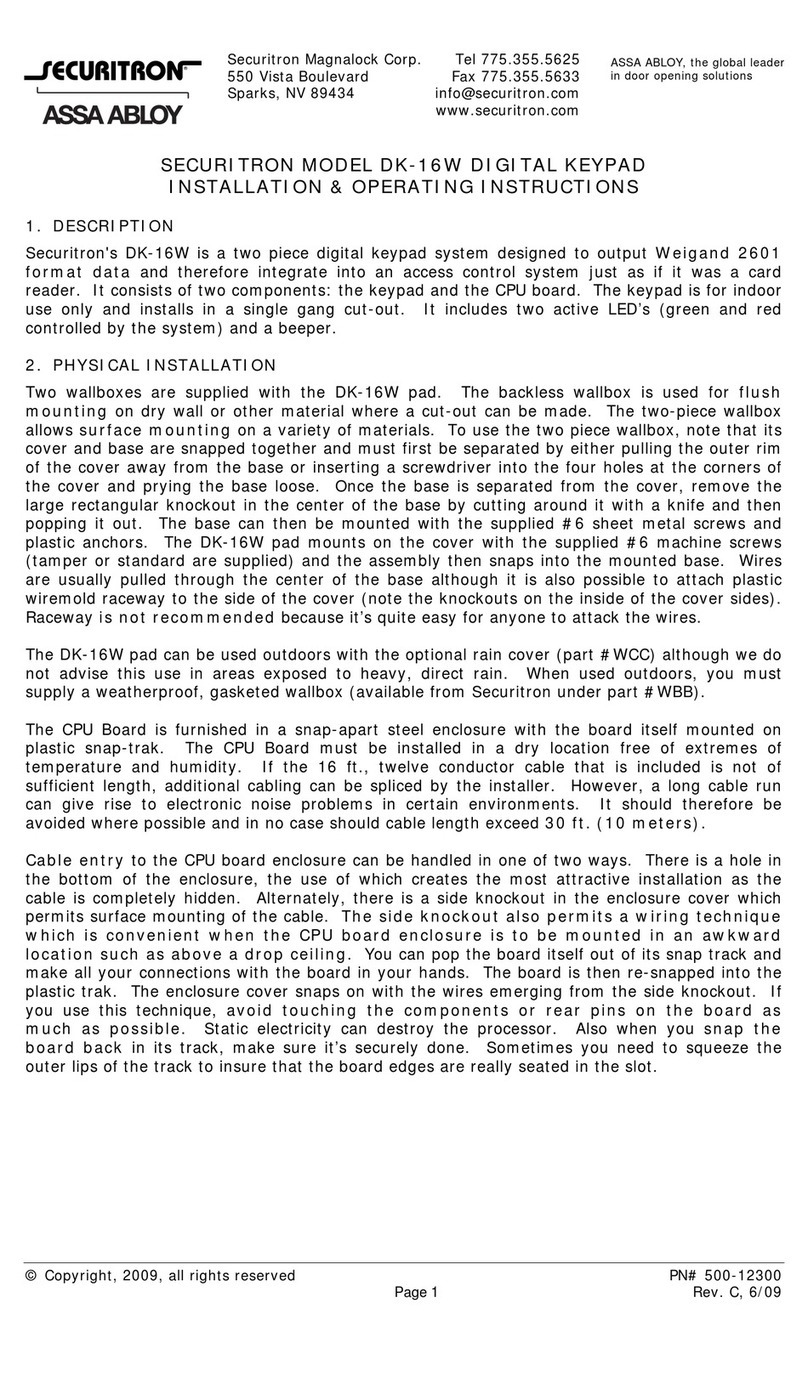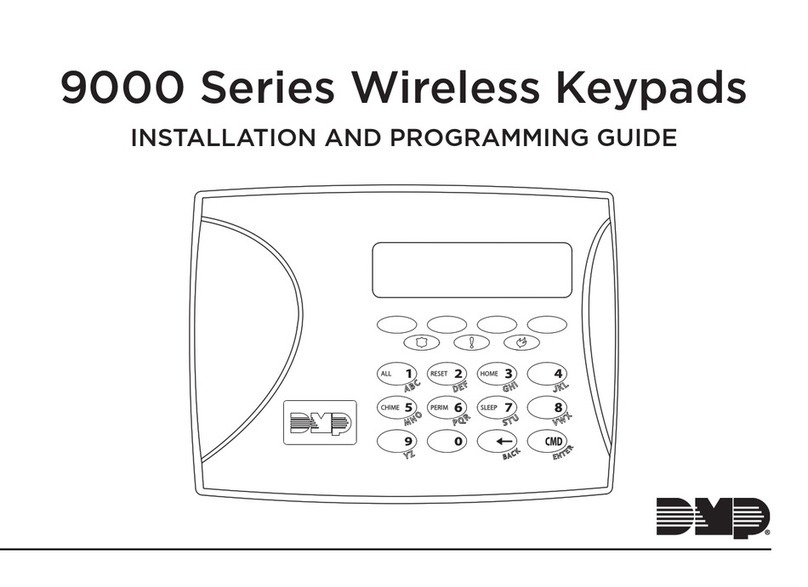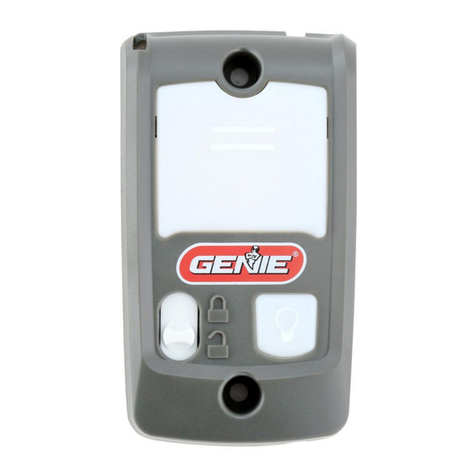Securitron DK-26W Manual

©Copyright, 2004, all rights reserved •Securitron Magnalock Corp., 550 Vista Blvd., Sparks NV 89434, USA
Tel: (775) 355-5625 •(800) MAGLOCK •Fax: (775) 355-5636 •Website: www.securitron.com
An ASSA ABLOY Group company
PN# 500-12500 Page 1
Rev. A.2, 1/04
SECURITRON MODEL DK-26W DIGITAL KEYPAD
INSTALLATION & OPERATING INSTRUCTIONS
1. DESCRIPTION
Securitron's DK-26W is a two piece digital keypad system designed to output Weigand 2601
format data and therefore integrate into an access control system just as if it was a card reader.
It consists of two components: the keypad and the CPU board connected by a 16 ft. cable. The
rugged stainless steel keypad may be mounted outdoors in any environment as it is fully
weatherproof. The keypad features two active LED’s (green and red controlled by the system)
and a beeper.
2. PHYSICAL INSTALLATION
The first step is to plan the physical location of the two components. The keypad is normally
surface mounted on the outside of the door to be controlled, and the CPU Board is mounted
inside the protected area safe from tampering.
FIG. 1: PHYSICAL INSTALLATION OF KEYPAD
MOUNTING
SURFACE
(1) MOUNT SCREW TO ENGAGE SLOT AT
TOP OF KEYPAD
DRILL 1/8" (3MM) HOLE
(2) DRILL 3/8" (10MM) HOLE FOR CABLE
(3) SECURE BOTTOM WITH SECOND
SCREW. COVER SCREW HEAD WITH
"DK-26" LABEL.
DRILL 1/8" (3MM) HOLE
NOTE: CHOOSE PHILIPS OR SPANNER
(TAMPER) HEAD SCREW
CABLE
To install the keypad, holes must be drilled for the 2 mounting screws and the cable. A template
is not provided due to unavoidable variations on the cable exit of each keypad. Referring to
Figure 1, note that the top screw engages the slot at the top of the keypad. Once the top screw
has been installed, the location of the cable hole should be set roughly by positioning the
keypad and marking the cable hole point. Make sure the keypad is pulled down firmly on to the
screw. A 3/8" (10MM) hole is then drilled for the cable. After the cable has been pulled through,
the final screw secures the keypad to the wall. Note that 2 alternate bottom screws are supplied
with the unit. One is a #10 spanner head for improved tamper resistance. Alternately the #8
Phillips standard screw may be used. After this, peel the backing of the enclosed Securitron
DK-26 label and affix it to the bottom of the keypad covering the head of the screw. This
not only improves the appearance of the keypad but helps foil casual vandalism. Note finally
that a blank rectangular label has also been furnished. This can be used to cover up the
“BELL” legend if desired.
The CPU Board is furnished in a snap-apart steel enclosure with the board itself mounted on
plastic snap-trak. The CPU Board must be installed in a dry location free of extremes of
temperature and humidity. If the 16 ft., twelve conductor cable that is included is not of sufficient
length, additional cabling can be spliced by the installer. However, a long cable run can give

Rev. A.2, 1/04 Page- 2
rise to electronic noise problems in certain environments. It should therefore be avoided where
possible and in no case should cable length exceed 30 ft. (10 meters).
Cable entry to the CPU board enclosure can be handled in one of two ways. There is a hole in
the bottom of the enclosure, the use of which creates the most attractive installation as the cable
is completely hidden. Alternately, there is a side knockout in the enclosure cover which permits
surface mounting of the cable. The side knockout also permits a wiring technique which is
convenient when the CPU board enclosure is to be mounted in an awkward location such
as above a drop ceiling. You can pop the board itself out of its snap track and make all your
connections with the board in your hands. The board is then re-snapped into the plastic trak.
The enclosure cover snaps on with the wires emerging from the side knockout. If you use this
technique, avoid touching the components or rear pins on the board as much as possible.
Static electricity can destroy the processor. Also when you snap the board back in its track,
make sure it’s securely done. Sometimes you need to squeeze the outer lips of the track to
insure that the board edges are really seated in the slot.
3. WIRING
3.1 POWER, DATA AND KEYPAD WIRING
Figure 2 shows the DK-26W CPU Board. You will make connections to the 18 terminals as
shown in the drawing and either leave the jumper block in the factory set position (connects pins
2 and 3) if you plan to power the DK-26W with 12 VDC or move the jumper to connect pins 1
and 2 if you will be using 5 VDC. Note that operation at 12 volts with the jumper block in the 5
volt position can damage the unit.
Note that the DK-26W will not operate on AC power. It will, however, accept full wave
rectified DC power (transformer + bridge rectifier) when it is being powered by 12 VDC.
When it is being powered by 5 VDC, the voltage must be regulated (+/- 1/2 volt). Be sure to
observe polarity when you power the DK-26W.
There are 12 color coded wires in the keypad cable. Refer to Figure 2 and connect each wire to
the indicated terminal on the CPU Board. No other connections may be made to these
terminals (except if two keypads are used with one CPU board).
The DK-26W will draw a maximum of 30 mA at 5 VDC or 12 VDC.
The Weigand output terminals: Data 0 and Data 1 connect to the appropriate inputs of the
access control system. The wire run maximum distance for reliable operation depends on the
wire gauge. A guide line is 200 ft. for 22 gauge; 300 ft. for 20 gauge and 500 ft. for 18 gauge.
FIG. 2: OVERVIEW OF CPU BOARD
GRN YEL RED BLU WHT BLK GRY BRN BGE ORG PNK VIO
D0 D1 LED XMIT
GREEN
YELLOW
RED
BLUE
WHITE
BLACK
GRAY
BROWN
BEIGE
ORANGE
PINK
VIOLET
MICRO-
PROCESSOR
FACILITY CODE
PROGRAM
BUTTON
TRANSMIT DATA
LED (FROM SYSTEM)
DATA 1
0 VDC (NEG)
+5 OR +12 VDC
DATA 0
132
JUMPER TO SET
VOLTAGE
FACTORY SET 2/3 = 12 V
CHANGE TO 1/2 FOR 5 V

Rev. A.2, 1/04 Page- 3
3.2 LED AND “TRANSMIT DATA” WIRING
The LED’s on the DK-26W follow the convention for card readers. When a “high” signal (+5
VDC) is connected to the LED terminal, the red LED will be on and the green LED will be off.
When this input goes “low” (0 VDC), the green LED will be on and the red LED will be off. This
flipping of the LED’s is controlled by the access system and typically prompts the user when his
entry has been accepted (or not accepted).
The “transmit data” terminal is not used with most systems. When it is unconnected, the code
sequence is automatically transmitted to the system following key entry (see Section 5).
However, with some systems, the controller can be busy and must therefore remotely command
data transmission. If this input is in a low state (connected to 0 VDC), the DK-26W will store the
code sequence until the input goes high (receives +5 VDC). The code will then be transmitted
as the system will be prepared to receive the sequence and release the door. Naturally, while a
code is being stored, the keypad will ignore further inputs as the delay prior to the system
commanding transmission of the code sequence will be very brief.
4. FACILITY (SITE) CODE PROGRAMMING
In the Weigand 26 bit code format (also called 2601), the first eight active bits constitute a
facility or site code. These eight bits correspond to standard numbers 0-254. The access
control system normally expects to see a “two part” transmission wherein the eight bit facility
code precedes the 16 bit PIN code which identifies the individual who is requesting entry.
Possible PIN codes convert to standard numbers 0-65,534. The reason for the creation of the
facility code is to enhance card security as on a card, both the facility and PIN codes are stored.
If a card was transported to a different facility, it would not be accepted by the different system
even though the PIN code happened to be valid because the facility code would not be.
With a digital keypad like the DK-26W, the facility code required by the system must be
internally stored since a person requesting entry will only know his PIN code. The DK-26W
ships with a factory set facility code of “0”. To change the facility code to the one in use by
the system, identify the program button on the unit’s CPU board (see Figure 2). With the unit
powered, press the button until you hear a steady beep. This annunciates facility code
program mode. If you do nothing, the unit will automatically drop out of program mode in 30
seconds and the facility code will not be changed. To change the code, during this 30 second
window, simply enter the new facility code. You don’t have to enter three digits if the facility
code is less than 100 (leading zeros are not necessary). Do not pause more then five seconds
between digits as the unit has an internal timer that resets five seconds after a key press. After
you have completed site code entry, you can press “BELL” to terminate the sequence or simply
wait five seconds. You will receive a single beep to confirm a good entry. If you have
entered a sequence that is too large (a number greater than 254), you will receive a double
beep (error). This is your prompt to re-enter the code. To do this, you will have to press the
program button another time as the unit will not remain in program mode after data entry.
The DK-26W employs non-volatile EEPROM memory so that the facility code is retained in a
power failure.
5. OPERATION
To operate the unit, simply enter the PIN code (from 0-65534) and then either press BELL or
wait five seconds. Note that successful key presses are echoed by a beep. The PIN code
together with the site code prefix stored in the unit will then be sent to the access control
system. Do not pause more than five seconds between digits or an incomplete sequence will
be transmitted as the unit automatically transmits when it does not see any key presses for five
seconds. The system will respond by allowing entry or not and will generally annunciate this by
control of the two LED’s. How the LED’s are used exactly will vary from system to system. If
you enter a number larger than 65,534, the DK-26W will reject the sequence and transmit
nothing. This rejection is communicated by two beeps (the error signal).
5.1 DUAL PAD OPERATION
If keypad control from both sides of the door is desired, two keypads can be connected to
one CPU Board. Simply put the colored wires from both keypads into the appropriate terminals
on the CPU Board such that two wires are in each terminal. Either keypad will then be able to
transmit a code and both keypads will beep and illuminate their LED's when either one is used.
Two is the maximum number of keypads that can be connected to one CPU Board. Note that in
the unusual case where both keypads are being used simultaneously, the code will not be
properly sent as the sequence will certainly be disturbed. Only one keypad may be used at a
time. Be sure you don’t violate egress building codes when employing a keypad on the
inside of a door. Check with your local building or fire department.

Rev. A.2, 1/04 Page- 4
APPENDIX A: 2601 CODE STRUCTURE
The 26 bit transmission begins with a parity bit followed by 24 code bits and ended by a second parity bit. The first
parity bit is even parity calculated over the first 12 code bits as follows: if the 12 bits sum to 0, the parity bit is set to
0. If the 12 bits sum to 1, the parity bit is set to 1. The second (ending) parity bit is odd parity calculated over the
second 12 code bits as follows: if the second 12 bits sum to 0, the parity bit is set to 1. If the second 12 bits sum to
1, the parity bit is set to 0.
The 24 code bits have internal structure as follows. The first eight bits are the facility code. The next 16 bits are
the PIN code. All data is transmitted Most Significant Bit first from the keypad. The transmission begins with the
even parity bit, proceeds through the eight bit facility code followed by the 16 bit PIN code and ends with the odd
parity bit.
The transmission of a 0 bit occurs when the data 0 line transitions below 1.1 V for 50 microseconds. The
transmission of a 1 bit occurs when the data 1 line transitions below 1.1 V for 50 microseconds. The interval
between bit transmitting pulses is one millisecond.
MAGNACARE®LIMITED LIFETIME WARRANTY
SECURITRON MAGNALOCK CORPORATION warrants that it will replace at customer’s request, at any time for
any reason, products manufactured and branded by SECURITRON.
SECURITRON will use its best efforts to ship a replacement product by next day air freight at no cost to the
customer within 24 hours of SECURITRON’s receipt of the product from customer. If the customer has an account
with SECURITRON or a valid credit card, the customer may order an advance replacement product, whereby
SECURITRON will charge the customer’s account for the price of the product plus next day air freight, and will
credit back to the customer the full amount of the charge, including outbound freight, upon SECURITRON’s receipt
of the original product from the customer.
SECURITRON’s sole and exclusive liability, and customer’s sole remedy, is limited to the replacement of the
SECURITRON product when delivered to SECURITRON’s facility (freight and insurance charges prepaid by
customer). The replacement, at SECURITRON’s sole option, may be the identical item or a newer unit which
serves as a functional replacement. In the event that the product type has become obsolete in SECURITRON’s
product line, this MAGNACARE warranty will not apply. This MAGNACARE warranty also does not apply to
custom, built to order, or non-catalog items, items made by others (such as batteries), returns for payment,
distributor stock reductions, returns seeking replacement with anything other than the identical product, or products
installed outside of the United States or Canada. This MAGNACARE warranty also does not apply to removal or
installation costs.
SECURITRON will not be liable to the purchaser, the customer or anyone else for incidental or consequential
damages arising from any defect in, or malfunction of, its products. SECURITRON does not assume any
responsibility for damage or injury to person or property due to improper care, storage, handling, abuse, misuse, or
an act of God.
EXCEPT AS STATED ABOVE, SECURITRON MAKES NO WARRANTIES, EITHER EXPRESS OR IMPLIED, AS
TO ANY MATTER WHATSOEVER, INCLUDING WITHOUT LIMITATION THE CONDITION OF ITS PRODUCTS,
THEIR MERCHANTABILITY OR FITNESS FOR ANY PARTICULAR PURPOSE.
Table of contents
Other Securitron Keypad manuals
Popular Keypad manuals by other brands
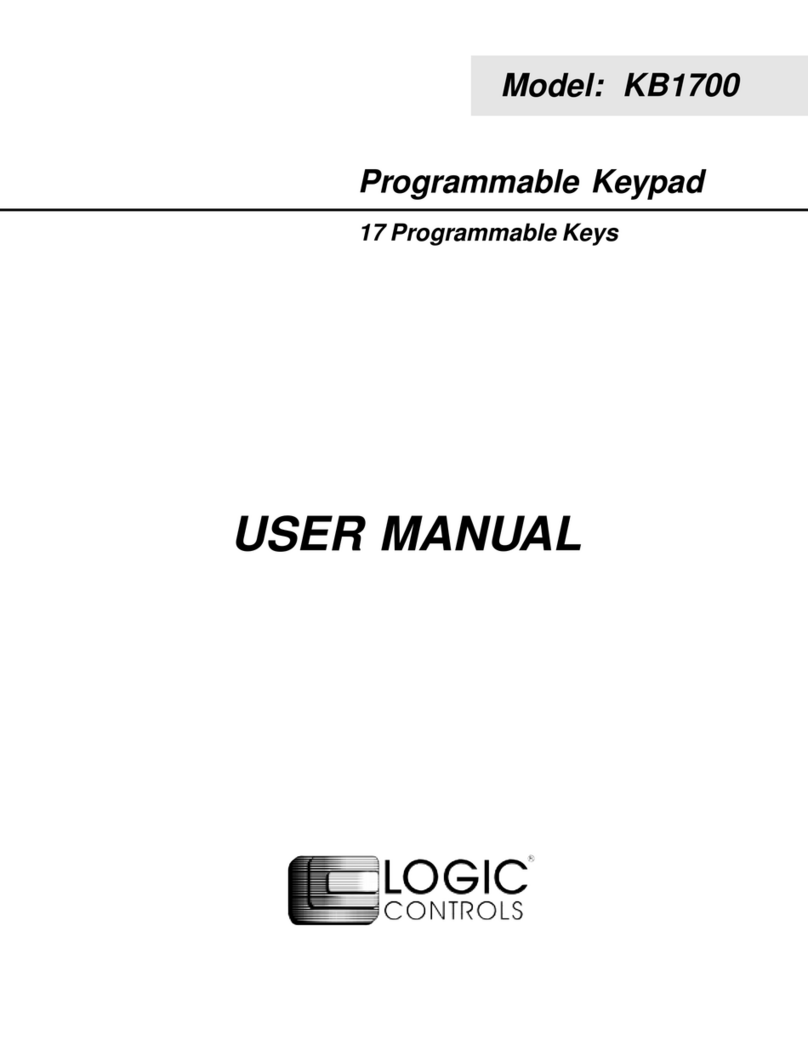
Logic Controls
Logic Controls KB1700 user manual
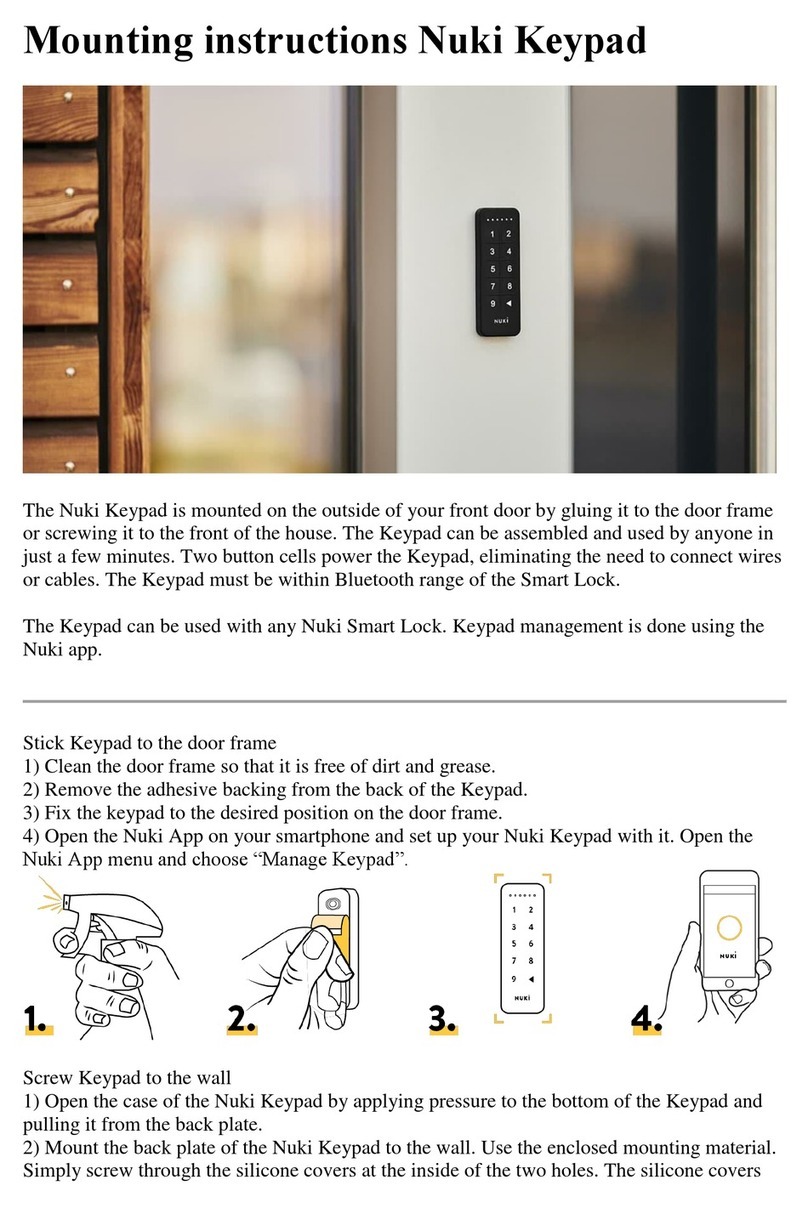
NUKI
NUKI Keypad Mounting instructions
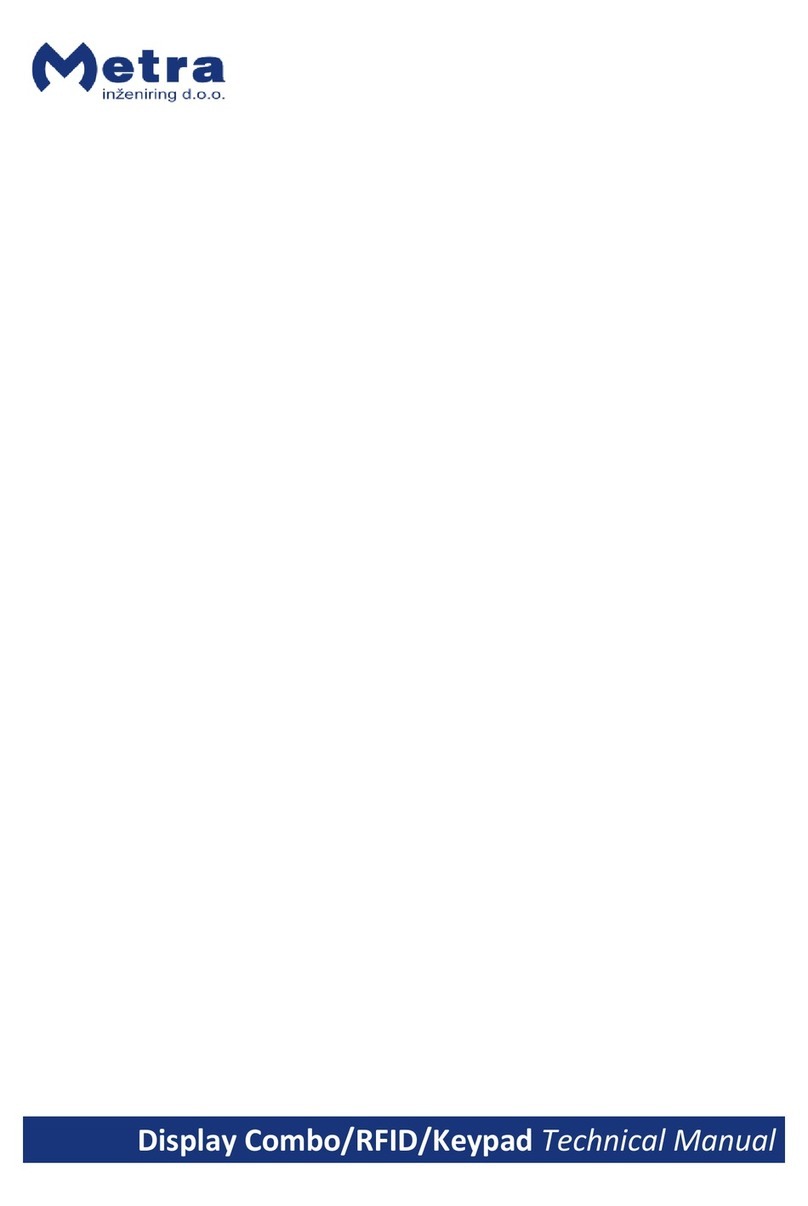
Metra Electronics
Metra Electronics Combo Technical manual
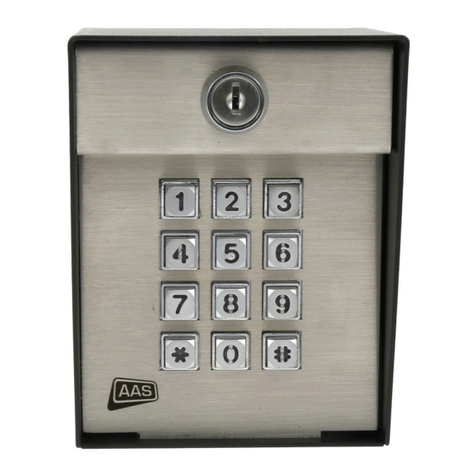
AAS
AAS ADVANTAGE DKE 26-100L User & installation manual
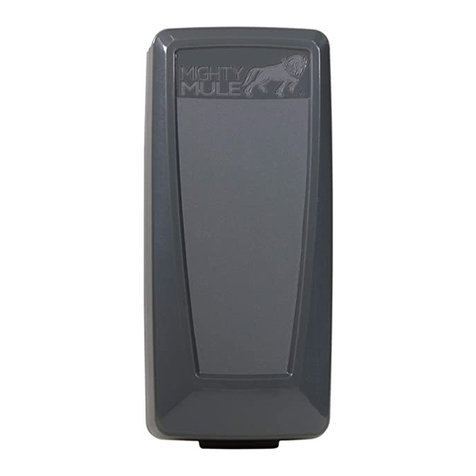
GTO
GTO Mighty Mule MMK100 instructions
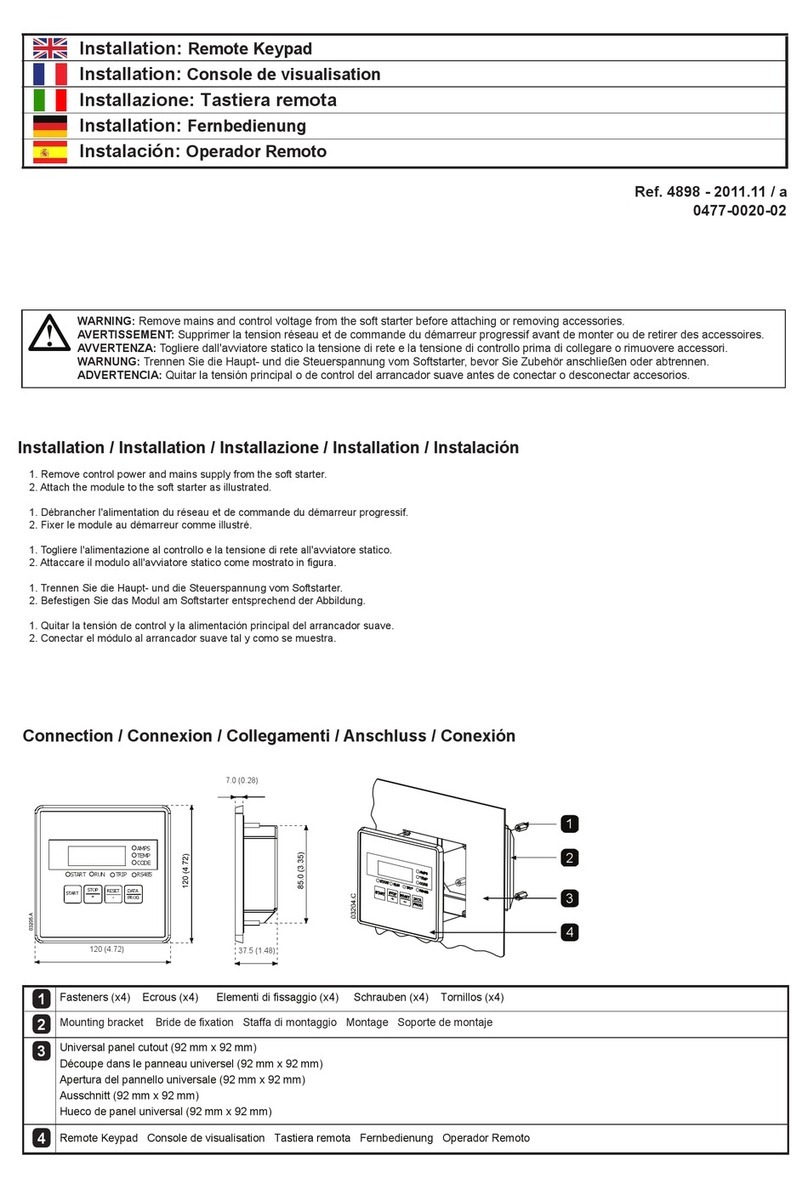
Nidec
Nidec Control Techniques Digistart D2-Keypad Installation sheet

Upgrading everyday security
Upgrading everyday security EL-2620 introduction
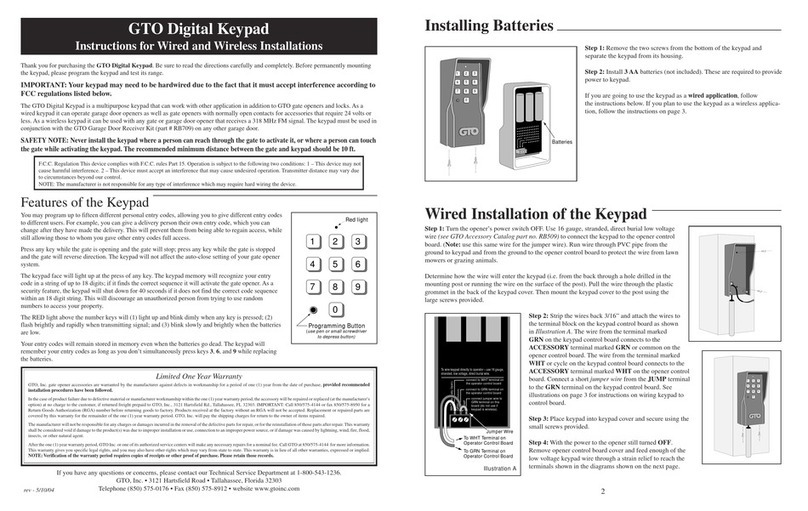
GTO
GTO Digital Keypad Instructions for installations
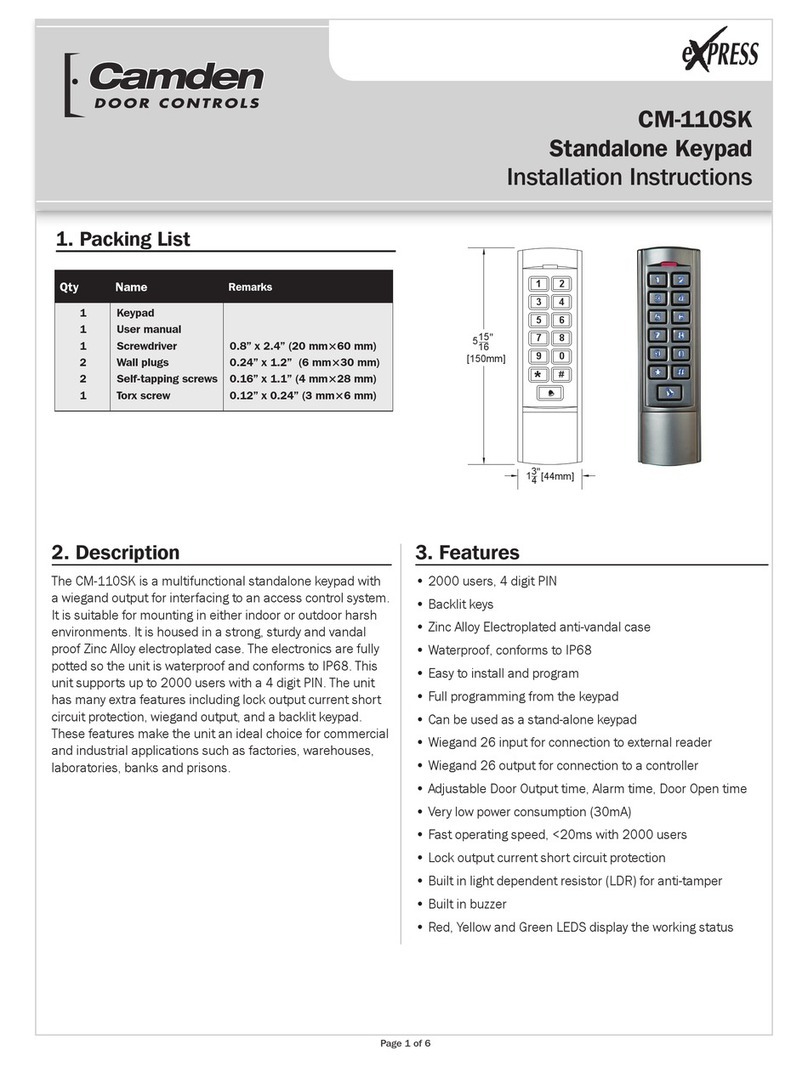
CAMDEN
CAMDEN CM-110SK installation instructions
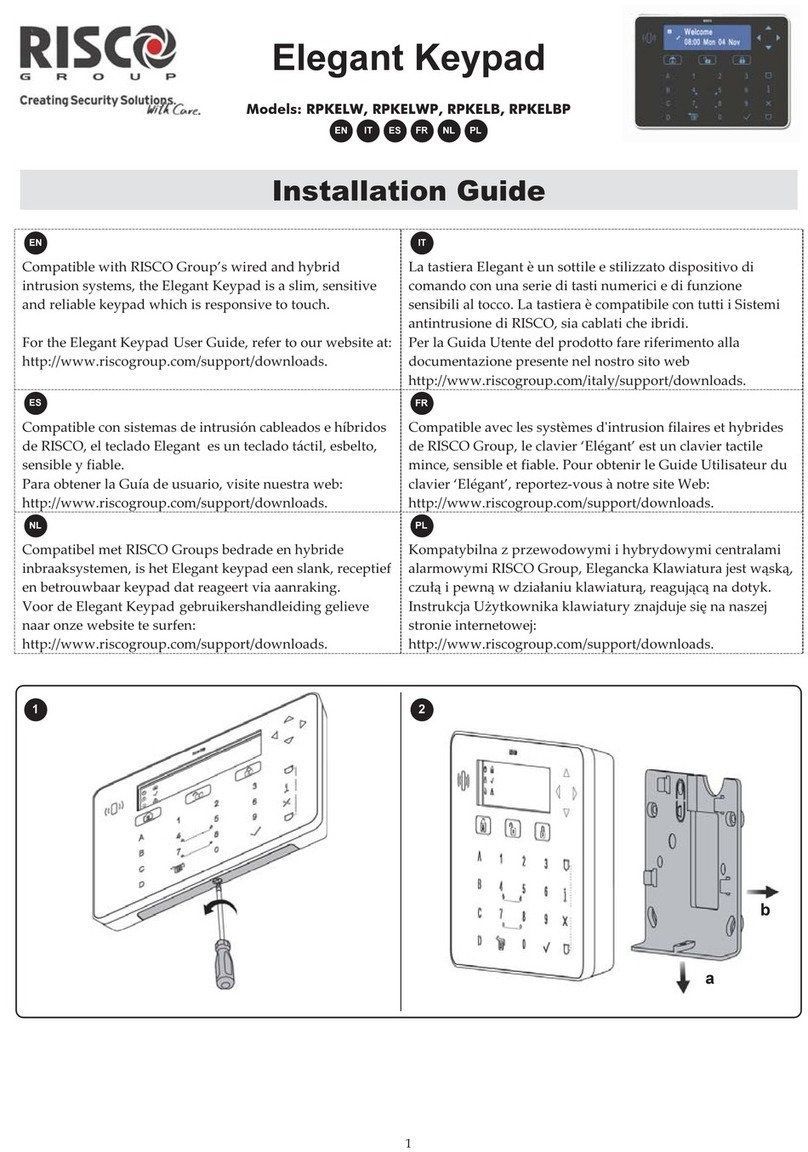
Risco
Risco RPKELW installation guide
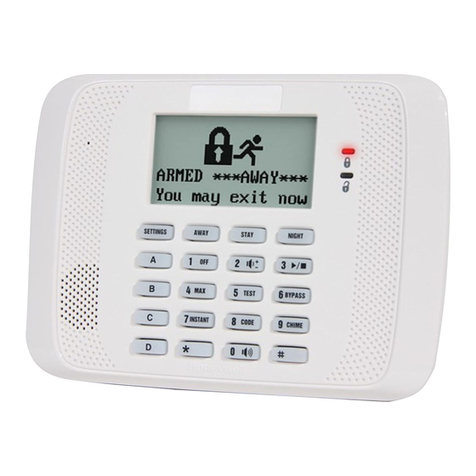
Honeywell
Honeywell ADEMCO 6162RF Installation and setup guide

Honeywell
Honeywell 6271C - Ademco TouchCenter Color Keypad Installation and user guide
